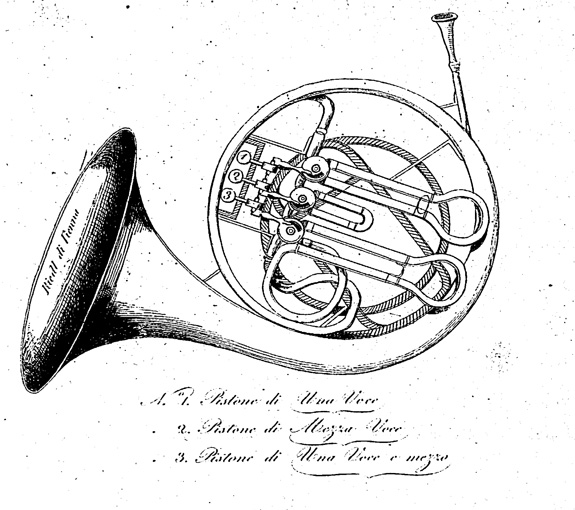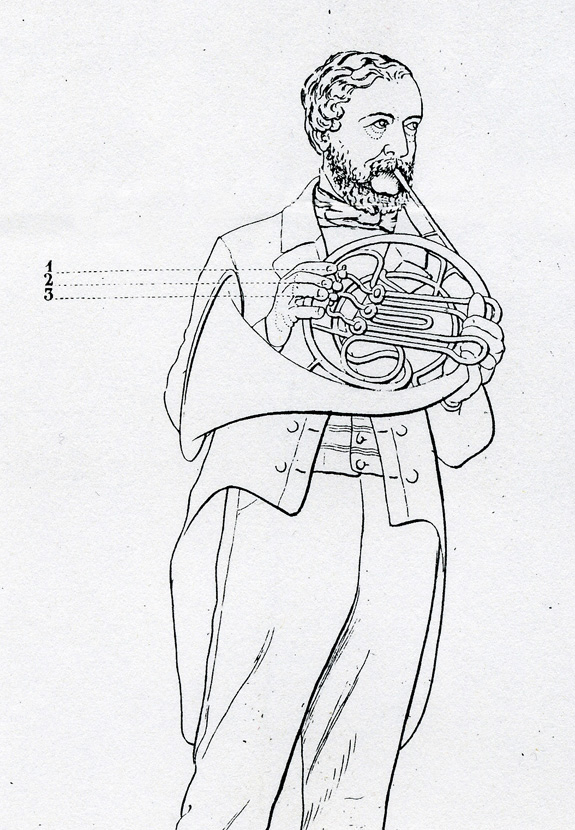| Label :
|
O.PAGANI & BRO. NEW YORK [star/tuning fork logo] PREMIATA FABBRICA FERDo. ROTH MILANO * |
|
Model:
|
Tosoroni Corno a Macchina (single valved horn) |
|
Serial Number:
|
none |
|
Date of Manufacture:
|
ca. 1905 - 1910 |
|
Key(s):
|
E-flat, (or F with an alternate tuning slide) |
|
Valves:
|
3 Rotary mounted on right-hand side |
|
Bore:
|
11.45 mm |
|
Bell Flare:
|
6.5 cm Vee gusset with 4.87 cm nickel silver garland |
| 6.2 cm. |
|
|
Bell Diameter:
|
27.7 cm |
|
Base Metal:
|
Yellow Brass |
|
Finish:
|
Lacquered |
| . (click on photos for larger view) |
|
 |
 |
|
|
The label (right) reads "O.PAGANI & BRO. / NEW YORK 1 [star/tuning fork logo] / PREMIATA FABBRICA / FERDo. ROTH / MILANO / * / ITALIA/*" The star atop a tuning fork is a trademark of Ferdnando Roth. Roth was born in Adorf, Germany in 1815 and died in Milan, Italy in 1898. He worked first for Pelitti, and later as a foreman in Prague and Vienna. The establishment of his Premiata Fabbrica in Milan is given variously as 1838, and 1842. Roth instruments were exhibited in Florence (1861), Santiago (1875), Milan (1881, 45 brass instruments, and 1894). An 1878 city directory lists the address at vis S. Giovanni in Conca 9, Milano. In 1892 a one-page catalogue was issued, "Premiata fabbrica d'instrumenti musicali in ottone e legno Ferdinando Roth." In 1894 he advertised as a specialist in saxophones and claimed to be the original supplier of Aida trumpets made according to Verdi's instructions. In 1894, blind and in his eighties, he put his son-in-law, Antonio Bottali, in charge and on his death in 1898 the firm became Roth & Bottali. |
 |
||||
|
|||||

